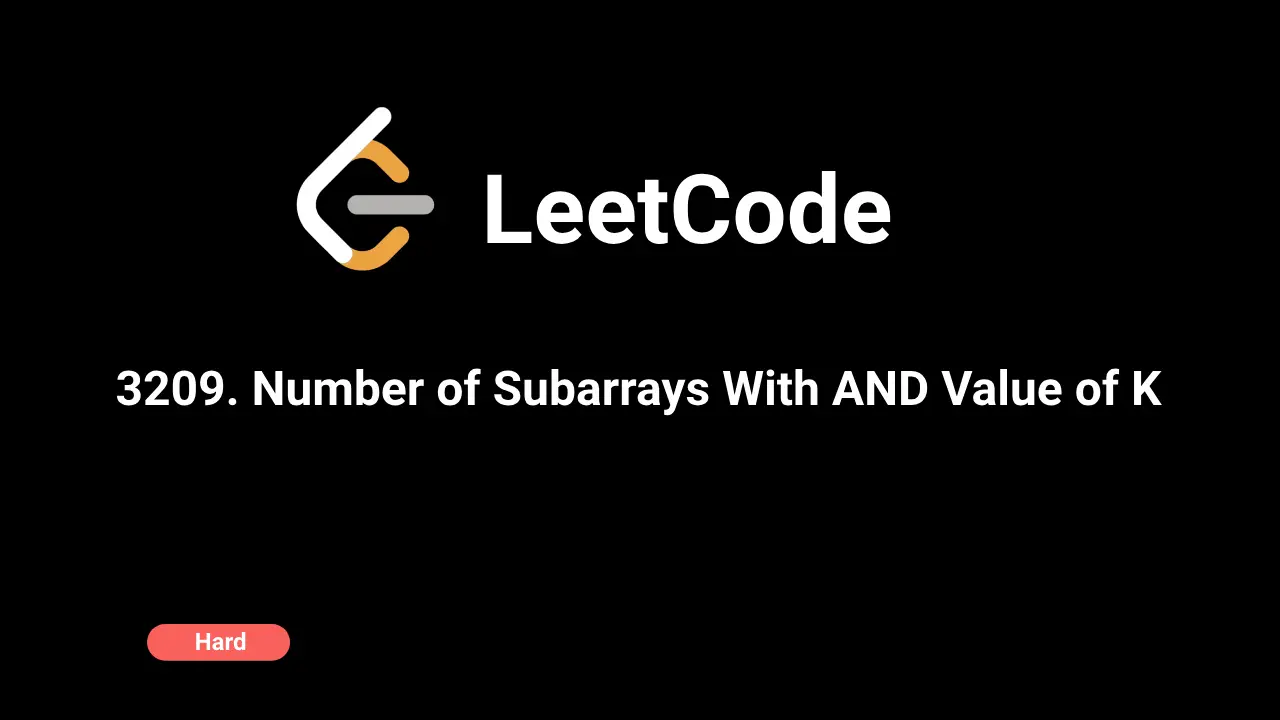🎨Now live: Try our Free AI Image Generation Feature

Intuition
To solve this problem, we need to understand the bitwise AND operation. The bitwise AND of a subarray is calculated by ANDing all the elements in the subarray. Our goal is to find subarrays where this AND operation results in the integer k.
The key insight is that the bitwise AND of any number with k will retain the bits of k only if those bits are present in the number. Hence, we can utilize a hashmap to keep track of all possible bitwise AND results up to the current index and their frequencies.
Approach
- Initialization: Start by initializing a hashmap
mapto keep track of the count of all bitwise AND results encountered so far. Also, initialize a variableresto store the count of valid subarrays. - Iterate through the array: For each element in the array, update a temporary hashmap
map2with new bitwise AND results formed by ANDing the current element with all keys inmap. - Update the current element in the hashmap: Additionally, add the current element itself to
map2with a count of 1. - Update the main hashmap: Replace
mapwithmap2at the end of each iteration. - Count the valid subarrays: For each iteration, add the count of subarrays with the bitwise AND result equal to
k(if present in the hashmap) tores. - Return the result: Finally, return
resas the count of subarrays with bitwise AND equal tok.
Complexity
- Time Complexity: O(n * m), where
nis the number of elements in the array andmis the number of unique bitwise AND results encountered so far. In the worst case,mcan be the same asn, resulting in O(n^2) complexity. - Space Complexity: O(m), where
mis the number of unique bitwise AND results. This space is used by the hashmap to store the counts of bitwise AND results.
Code Explanation
Variable Initialization
var map = {};
var res = 0;map: A hashmap initialized to store bitwise AND results and their counts.res: A variable initialized to store the count of valid subarrays where bitwise AND equalsk.
Main Loop Through Array
for (var x of nums) {- Iterate through each element
xin thenumsarray.
Nested Loop for Previous Map
var map2 = {};
for (var y in map) {
map2[y & x] = (map2[y & x] || 0) + map[y];
}- Create a new hashmap
map2to store updated bitwise AND results for the current elementx. - Iterate through the keys
yof themaphashmap. - Calculate the bitwise AND of
yandx, updatingmap2with the count frommap.
Update Map2 with Current Element
map2[x] = (map2[x] || 0) + 1;- Update
map2with the current elementxitself, counting it once.
Update Main Map
map = map2;- Update the main
maphashmap tomap2for the next iteration.
Count Valid Subarrays
res += map[k] || 0;- Add the count of subarrays where the bitwise AND equals
kfrommaptores.
Return Result
return res;- Return
res, which contains the total count of subarrays where bitwise AND equalsk.
Code
C++
class Solution {
public:
long long countSubarrays(vector& nums, int k) {
unordered_map map;
long long res = 0;
for (int x : nums) {
unordered_map map2;
for (auto& [y, count] : map) {
map2[y & x] += count;
}
map2[x] += 1;
map = map2;
res += map[k];
}
return res;
}
}; Python
class Solution:
def countSubarrays(self, nums: List[int], k: int) -> int:
map = {}
res = 0
for x in nums:
map2 = {}
for y in map:
map2[y & x] = map2.get(y & x, 0) + map[y]
map2[x] = map2.get(x, 0) + 1
map = map2
res += map.get(k, 0)
return resJava
class Solution {
public long countSubarrays(int[] nums, int k) {
Map map = new HashMap<>();
long res = 0;
for (int x : nums) {
Map map2 = new HashMap<>();
for (int y : map.keySet()) {
map2.put(y & x, map2.getOrDefault(y & x, 0L) + map.get(y));
}
map2.put(x, map2.getOrDefault(x, 0L) + 1);
map = map2;
res += map.getOrDefault(k, 0L);
}
return res;
}
} JavaScript
/**
* @param {number[]} nums
* @param {number} k
* @return {number}
*/
var countSubarrays = function (nums, k) {
var map = {};
var res = 0;
for (var x of nums) {
var map2 = {};
for (var y in map) {
map2[y & x] = (map2[y & x] || 0) + map[y];
}
map2[x] = (map2[x] || 0) + 1;
map = map2;
res += map[k] || 0;
}
return res;
};